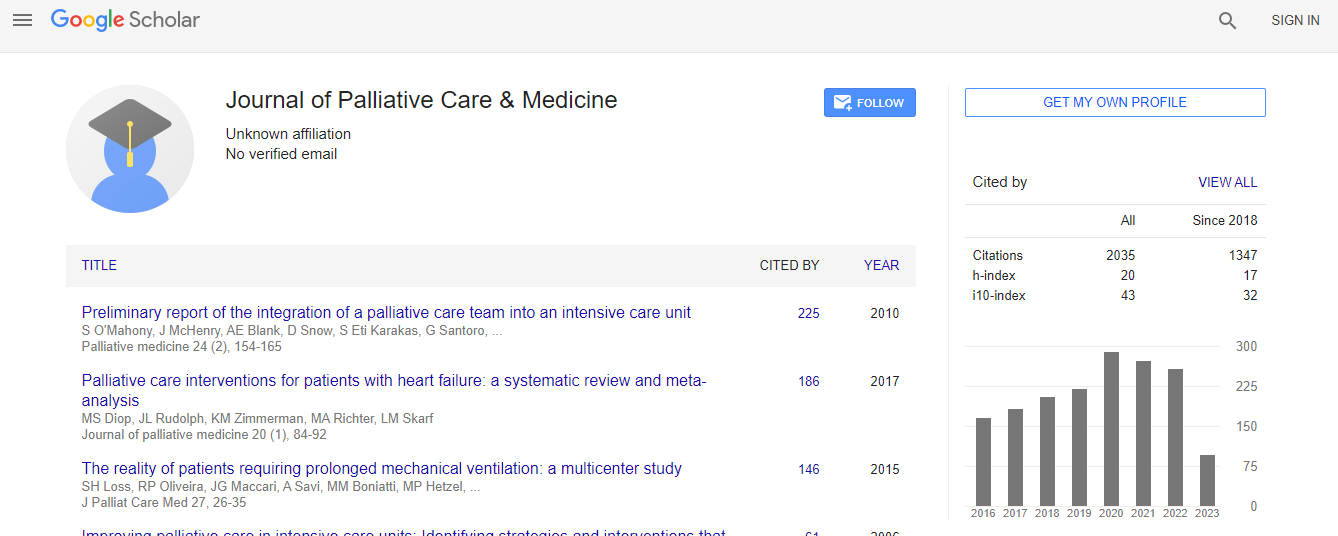Research Article
Exploring the Challenges of Implementing the Edmonton Symptom Assessment Scale in a Specialist Palliative Care Unit
M Lucey1*, M Conroy2 and K Ryan31Specialist Registrar in Palliative Medicine in Milford Hospice, Limerick, Ireland
2Consultant in Palliative Medicine in Milford Hospice, Limerick, Ireland
3Consultant in Palliative Medicine, St Francis Hospice, Raheny, Ireland
- *Corresponding Author:
- Dr. Michael Lucey
Consultant in Palliative Medicine, Milford Hospice
Castletroy, Limerick, Ireland
Tel: +353868582026
E-mail: lucey_mike@hotmail.com
Received date: June 27, 2012; Accepted date: August 23, 2012; Published date: August 25, 2012
Citation: Lucey M, Conroy M, Ryan K (2012) Exploring the Challenges of Implementing the Edmonton Symptom Assessment Scale in a Specialist Palliative Care Unit. J Palliative Care Med 2:128. doi: 10.4172/2165-7386.1000128
Copyright: © 2012 Lucey M, et al. This is an open-access article distributed under the terms of the Creative Commons Attribution License, which permits unrestricted use, distribution, and reproduction in any medium, provided the original author and source are credited.
Abstract
Background: Many symptom assessment tools have been developed to aid evaluation of patient’s symptoms. The Edmonton Symptom Assessment Scale is one such tool. The ESAS was introduced on the inpatient unit in Milford Hospice (a 30 bedded tertiary palliative care unit) in December 2007. However, a 3-month chart review revealed a low completion rate (20%) of the ESAS.
Aim: The aim of this study was to assess the reasons for the low completion rate of the ESAS in the unit. Methods: A mixed methods approach using both questionnaire and focus group was undertaken. The population sampled was the nursing staff who were responsible for ensuring the completion of the ESAS in the unit on a daily basis.
Results: The main reason for the low completion rate of the ESAS was that nursing staff perceived that it was too burdensome for sick patients to complete (76%). Also, nursing staff felt that the tool was not clinically helpful and that it was too time consuming for patients to regularly complete. Other important issues relating to the introduction process for symptom assessment tools are also identified. Conclusions: The results of this study are consistent with findings in the literature relating to other symptom assessment tools. Implementing such tools may be burdensome for patients with a poor functional status in an advanced cancer setting. Areas of focus for further research include shorter symptom assessment tools which are more reflective of a patients twenty four hour symptom profile, and also proxy rated assessment tools.

 Spanish
Spanish  Chinese
Chinese  Russian
Russian  German
German  French
French  Japanese
Japanese  Portuguese
Portuguese  Hindi
Hindi 
